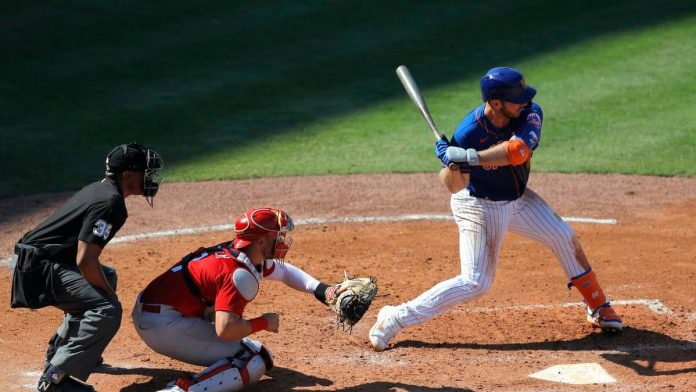This article is written by Shradha Jain pursuing Diploma in Intellectual Property, Media, and Entertainment Laws from LawSikho.
Table of Contents
Intellectual property and sports: Symbiotic relationship
Sport is not just a means of recreation; it is also a multi-billion-dollar industry. State-of-the-art sports equipment, attractive sportswear designs, and enthusiasm for competitions make sport a very pleasant and sought-after activity. However, sport cannot become a commercially productive asset without intellectual property. In modern times, intellectual property rights have become a major source of income for the sports industry. Intellectual property rights include copyrights, trademarks, advertising rights, broadcasting rights, patents, and even plant variety rights (think of the lawns of sports fields).
The growing importance of the symbiotic relationship between sport and intellectual property can be witnessed as the theme of World Intellectual Property Day 2019 was “Reach for Gold: IP and Sports”. Income equal to 1% of world GDP is generated by the sports industry. To surmise intellectual property rights, promote innovation and creativity in all fields, including sport. More innovation and creativity in sports means access to new ways to improve our athletic performance and our enjoyment of the sport; better equipment, more business opportunities, more jobs, and a great fan experience. This article examines examples of how the intellectual property system overprotects certain interests of the sports industry to the detriment of the wider public interest.
How intellectual property overprotects certain interests of the sports industry?
-
Publicity rights
As defined by the International Trademark Association, “the right of publicity is an intellectual property right safeguarding against the misappropriation of the name, likeness, or other indicia of personal identities- like nickname, pseudonym, voice, signature, likeness, or photograph of a person, for the purpose of commercial benefit, by any other person.” In O’Brien vs. Pabst Sales Co., the first time the question of publicity rights came into the picture as a variation of the right to privacy. The footballer’s signature was used as part of an advertisement campaign and the court concluded that it did not violate privacy. That changed in 1953 when the case of Haelan Laboratories, Inc. v. Topps Chewing Gum, Inc involving a major league baseball player who had a contract with baseball card companies.
The Federal Appellate Court overruled its earlier ruling that “fame is not merchandise” and defined publicity rights as a form of private property. By the late 1960s, several American courts pushed the limits of the right to publication by defining individual life “facts” and statistics about individual athletic performance as aspects of an athlete’s personality. A list of the professional athletes who have sued or whose licensees or agents have sued for violation of their right of publicity is a lengthy list some names are; Michael Jordan, Joe Montana, Elroy “Crazylegs” Hirsch, John Riggins, Joe Namath, Tiger Woods, Kareem Abdul-Jabbar, Ben Hogan, Arnold Palmer and so on. Allowing professional athletes to take ownership of their names and statistics so that someone unrelated to the press cannot take advantage of such facts puts too much pressure on intellectual property protection. It obliges sports fans to pay for information that was previously free.
-
Copyright and broadcasting
Sport in the classic sense, i.e., in the arena and the stadium, restricts the number of spectators. With the popularity of radio and television, the number of virtual audiences has increased since the 1950s; the virtual audience has grown exponentially. Broadcasting has become the most lucrative intellectual property for sports teams and their athletes. Due to the high public demand for access to sporting events, professional teams and athletes naturally assert their property rights to their performances and images and then authorize the use of this “property” for high fees. These costs are reimbursed by the broadcaster from the fans only for an increase in subscription costs. There was also a big trend in the United States where previous sporting events which were available for free are now accessible upon payment. Almost three-quarters of Americans have access to pay-TV.
This inevitably turns fans up and angry, but sporting teams and athletes are concerned about the fees they are receiving for broadcasting their performances. For example; according to Statista, the National Football League will collect “$54.6 billion from TV contracts with FOX (runs from 2014-2022), CBS (2014-2022), NBC (2014-2022), ESPN (2014-2021), and DirecTV (2015-2022)”. The courts refused to recognize copyrights in the case of live broadcasting until 1976. The new Copyright Act provided for copyright protection as long as recorded on a film tape.
-
Trademark
Federal trademark protection is governed by the Lanham Act. The statute holds that a trademark is “any word, name, symbol, or device, or any combination thereof: 1) used by a person, or 2) which a person has a bona fide intention to use in commerce…to identify and distinguish his or her goods, including a unique product, from those manufactured or sold by others and to indicate the source of the goods, even if that source is unknown.”
The brand is an important component, it creates loyalty to the team and builds the goodwill and reputation of the brand associated with the sport or team, which has led to an increase in the registration of various logos, brands, and marks of the sports team. Examples are- Washington Football Team, logos of various National Football League teams and Pat Riley trademarked the term three-peat in 1988 and received about $300,000 in royalties when the Chicago Bulls got a three-peat. As the trademarked goods are expensive not all fans can buy them and this leads to a rise in the counterfeit industry. Also, there are instances to trademark anything and everything that make it difficult for manufacturers for eg- Rod Smart who played the National Football League got his nickname ‘HE Hate Me’ trademarked and put it on his jersey. Federal authorities in 2014 seized counterfeit National Football League sports equipment for around $ 39 million, showing the problem is not going away.
-
Trade secrets
Sports teams also generate a huge amount of trade secrets to gain a competitive advantage in the field and create value. Trade secrets and patents are the two sides of the same coin. Patents and design rights are the publicly known aspects of the invention, while trade secrets encompass the undisclosed knowledge behind it.
Trade secrets can take many forms in the world of sports, from proprietary information and procedures used by teams and individual leagues to business techniques and strategies used by manufacturers of sporting goods and products. For example, golf balls can be more aerodynamic, or skateboards can be lighter and stronger. The process of developing new products and designs requires years of prototyping and testing, which must be kept secret to keep the competition from digressing. The best example of trade secrets being the movie Moneyball with Brad Pitt, which was based on the book The Art of Winning an Unfair Game by Michael Lewis.
-
Patent
In the United States, the patent is granted for a term of 20 years, giving the innovator enough time to capitalize it. To earn the return on investment made for such discovery. sports and patents go hand in hand. There is always a need for newer, fitter, stronger, durable, reusable gears and equipment. Nowadays athletes even demand environmentally-friendly gear and equipment.
An example of this is the invention of the waffle trainer which was created by Bill Bowerman and his student Phil Knight. They revolutionized the sneaker industry and founded Blue Ribbon Sports which is today known as Nike and has filed several patents. This trend makes it difficult for small manufacturers to invest in research and development(R&D) to develop better products and sometimes the said product could be already in the market-leading to waste time, money, and efforts. This is also the issue for apps and wearables which are being increasingly manufactured by sports and fitness industries. The market for wearable devices is expected to double in the next three years, from 125 million devices in 2017 to 240 million in 2021, with the so-called smart clothing category growing at a 76% compound annual growth rate.
Conclusion
In summary, it can be said that intellectual property rights, in turn, play an important role in the sports business, which in turn leads to the growth and development of the sport. Without adequate protection of intellectual property rights in sport, it would be difficult to increase the revenue of the sport, hence its development will be hampered. But it should not be so zealously overprotected that it defeats its purpose. It is a pastime for the masses be it rich or poor.
With such overprotection it might become a pastime of only a few elites, defeating the feeling of community participation. Hence, it is in benefit of both the sports community and the fans that there is a balance between intellectual property rights and what is accessible to the public, its fans. As Jock Stein said “Football without fans is nothing. It could be the greatest fame in the world but if there are no people there to watch it, it becomes nothing. The fans are the lifeblood of the game”
References
- https://core.ac.uk/download/pdf/189696861.pdf
- https://www.wipo.int/ip-outreach/en/ipday/2019/ip_sports.html
- https://www.theglobalipcenter.com/wp-content/uploads/2018/06/023441_GIPC_Sports_Econ_Insides_03.pdf
Students of Lawsikho courses regularly produce writing assignments and work on practical exercises as a part of their coursework and develop themselves in real-life practical skills.
LawSikho has created a telegram group for exchanging legal knowledge, referrals, and various opportunities. You can click on this link and join:
 Serato DJ Crack 2025Serato DJ PRO Crack
Serato DJ Crack 2025Serato DJ PRO Crack











 Allow notifications
Allow notifications



